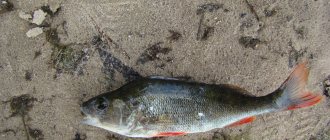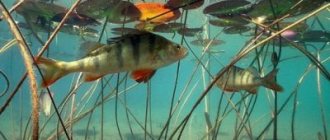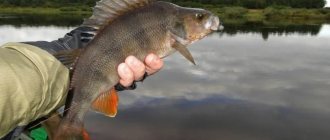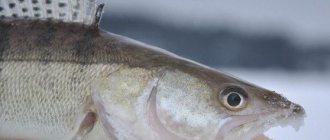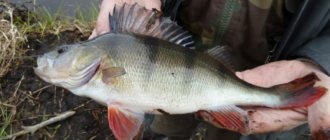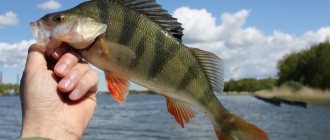Choosing a spinning rod for microjigging
Microjig gained popularity more than 10 years ago. Every year his supporters become more and more numerous. This number creates a demand for specific gear. The choice of spinning rod for microjig is the basis for future fishing trips. The selection of a fishing rod is carried out according to several parameters: test, length, action and price. “Mikrushny” casting starts from 0.5 grams and is called “ultralight”. The test determines the weight of the baits that the angler intends to fish with. 2-3 grams plus bait are considered standard .
Length and action are specific indicators. Short models are used for fishing from boats, while long ones predominate in coastal fishing. The rod's structure is nothing more than the starting point of the blank's bending. For microjig fishing, fast and ultra-fast types are used.
The price range determines the quality of the “stick”. You should not take too expensive models without some fishing experience.
Wiring along the bottom
Bottom fishing is very interesting during periods when the fish are especially passive. With the help of bait animation on the bottom you can achieve good results at any time of the year. There are many types of bottom wiring.
The simplest thing is to drag the bait evenly along the bottom covering, occasionally pausing. While moving, the bait raises turbidity, which tempts the fish. A slowly crawling imitation will seem like easy prey to a predator.
There is good wiring for worms. It works especially well in winter. You need to move the tip of the spinning rod along the bottom of the worm at a distance of 10-15 cm and pause. The duration of the pause can vary from 5 to 30 seconds. It all depends on the activity of the fish.
The disadvantage of running microjig baits along the bottom is the high probability of snagging. But in some cases, without such wiring it will not be possible to catch fish. Therefore, bottom wiring is worth adopting.
Cord or fishing line?
The best choice is braided cord , the diameter of which should not exceed 0.1 mm.
Its advantage lies in its strength and casting range. A thin line will break at the slightest resistance from the fish, not to mention the hooks. However, it also has a huge advantage - transparency. The visibility of braided line often has a negative impact on the catch. Experienced fishermen have found a way to fix this. Fluorocarbon is a fishing line that becomes invisible under water, to a fish's eye, as a result of light refraction. This feature allows you to enlarge its diameter and use it as a leash. The rigidity of fluorocarbon prevents the rig from getting tangled with the bait, which is another advantage. This trick is used when the water is highly transparent, especially in the fall.
Perch in October on a spinning rod - learn how to catch correctly
Catching perch in October with a spinning rod is a very exciting and catchy fishing activity. The striped robber, which began actively pecking back in September, reaches the peak of its pecking activity by the beginning of October.
That is why this time is considered the best time to start learning spinning fishing and mastering new methods, such as ultralight, twitching or microjig. It is also optimal to test new lures for perch fishing in late September - early October.
Let's decide what to use to catch perch on a spinning rod in September-October. To do this, you can use two methods:
- ultralight spoons and wobblers;
- microjig.
Due to its small size, the striper rarely attacks large objects, so catching perch on a spinning rod in September with ultralight baits gives the best results. As such you can use:
- micro turntables;
- vibrators;
- small wobblers: minnows and cranks.
In many surveys, the “Lucky Craft Clutch” model is recognized as the best of the perch wobblers; in the fall it literally mows down both sailors and humpback whales.
For this fishing we will need a super-light spinning rod for perch with fast action and a weight of up to five grams. This is the type of tackle that is easiest to flash and twitch.
The blank is equipped with either a spinning reel with a small spool, approximately 1000-1500 units according to the Shimano classification, or a small multiplier, depending on the preferences of the angler. The reel can be wound with either monofilament line with a diameter of 0.08-0.10 millimeters or braided line. By the way, read how to choose a cord here.
If one part of those who like to hunt for striped sailors prefers classic trolling, then the second half of spinning anglers are successfully mastering microjig, which is rapidly gaining popularity. In October, perch on a spinning rod with jig baits is caught no worse than with spoons or wobblers.
For microjig fishing, it is best to have a special one with a soft tip, which transmits visual information about everything that happens under water. The choice of reel and working cord is no different from the recommendations for ultralight tackle.
You can equip a microjig spinning rod with both regular and spaced equipment, such as:
- Moscow or diverting leash;
- Carolina;
- Texas;
- drop shot.
It is advisable to use spaced equipment in September, when aquatic vegetation has not yet sank to the bottom of the reservoir. But catching perch with a spinning rod in October is already possible with a simple jig, since the fallen grass no longer interferes with fishing along any water horizon.
The diverter leash equipment is built according to the following principle:
- a triple swivel is tied to the end of the main line;
- a branch, 30-50 centimeters of monofilament, with a load is tied to its lower ring;
- A leash with a micro-silicone bait on a hook is attached to the middle ring.
Small twisters up to five centimeters in length are best suited as bait for a retractable leash. Often they use a so-called garland: two or three lead leashes with baits. It seems to the perch that there is a school of fry in front of him and he attacks it very excitedly.
Carolina and Texas rigs are similar, both use a lead bullet sliding along the line, and the bait is attached to a hook located at the end of the line, only in Carolina the sinker is separated from the silicone by a short leash. In these rigs, silicone worms work better, and the wiring is done in the form of slow pulls near the bottom.
Edible silicone is the key to success
Silicone is considered the most catchy bait in microjig. In recent years, “edible rubber” has gained recognition among fishermen. Such baits are made with the addition of salt and attractants. The first component has a positive buoyancy effect on the silicone, while the second component exclusively affects the taste. This technology made it possible to catch even the most passive fish. Various variations of worms and insects appealed to the underwater inhabitants.
Silicone baits are divided into active and passive. The former have their own game, and to use the latter, additional efforts must be made.
Types of artificial baits for microjig:
1. Slugs (worms, leeches). 2. Vibrating tails (a fish model with an active tail). 3. Twisters (have a flattened tail in the form of a tick). 4. Crustaceans. 5. Insects (dragonfly larva, mayfly and others).
Such a classification does not cover the entire variety of types of bait. However, there is one similarity between them - catchability.
To fish with edible silicone, you will need dismountable “Cheburashkas” and hooks with a wide eye. This rig is more flexible than a standard jig head. It is better to knit a leash directly to the weight, without a fastener. An extra element will worsen the bite.
Silicone baits are produced by many companies and have a huge number of variations. My own experience helped me identify the most catchy of them.
TOP 5 active baits for microjig in summer:
• Hogy Hog; • Swing Impact; • Curly Grub; • Easy Shiner; •Shad Tail; • Madd Wag.
If you happen to come across something like this on a store shelf, you shouldn’t pass it by. Autumn has its favorites in microjig , among which are:
• Javastick; • Fishtail; • Tannta; • Agi Ringer; • Sexy Impact.
These types of edibles are designed taking into account all the characteristics of cold water and passive fish. The choice of colors is based on the transparency and characteristics of a particular body of water. The clearer the water, the darker colors should dominate your fishing. Acid colors are used in conditions of opacity.
Tackle
With the arrival of the first frosts, the water gradually begins to lighten, and the vegetation sinks to the bottom. Experienced fishermen say that the best time to catch perch is in November using a spinning rod. The most catchy rod is a rod weighing from 2 to 21 grams. This will be quite enough for perch fishing in November to bear fruit. There is no need to use leashes: they will unnecessarily alarm the fish and interfere with the graceful play of the bait. There’s no need to be tricky with the fishing line either. With monofilament with a diameter of up to 0.18 millimeters, any perch in November is excellent.
Wiring for microjigging and searching for perch
When entering a body of water, it is necessary to take into account all its features and focus on previous fishing experience. Finding a school of hungry perch in a new place is not easy. You should look for depths of up to 2 meters if fishing takes place during the warm water season. In autumn, perch can be found in deeper areas.
Each spinning player has his own, time-tested, wiring. However, there is a basic classification. Wiring can be done with a reel, a rod, or a combination. The first type is typical for our fishermen. The well-known “step” dates back to the time of Sabaneev. Animation of a rod blank, or rather its tip , came to us quite recently. This method is more suitable for catching “striped fish”, since it is easier to control the game.
“Double toss and pause” is the most effective technique among anglers. The pause lasts from a second to 5. The weaker the bite, the longer the silicone should be left on the bottom. A passive perch manages to swim up and decides to attack. Another popular method is called "drawing" . Its purpose is to pull the bait from the edge. Silicone in the form of crustaceans is excellent for such wiring.
A reservoir is an individual habitat for underwater inhabitants, with its own microclimate and characteristics.
When you come fishing, you shouldn’t get stuck with only one type of microjig bait. If there are no bites, you need to try all available options. This tactic gives the best results.
Tactics and fishing techniques
With the onset of cold weather, small fish, the usual food of perches, go deeper into the reservoir, until the first deep dumps. This is where you need to look for perches. The baits used are twisters and vibrotails, about three centimeters long. The wiring used is classic stepped with different step sizes. It is used at different levels, in the bottom layer of water, with tapping on the bottom. And also in different depth horizons. If stepwise wiring does not work, you need to try uniform wiring at different horizons, with periodic changes in speed.
Read: Fishing with a dead fish
When fishing with a microjig, the main thing is to find the key to the preferences of this fish, precisely on this day. And when the working bait and working wiring are determined, all that remains is to apply this formula of perch preferences in all promising places and enjoy fishing for predatory fish.

